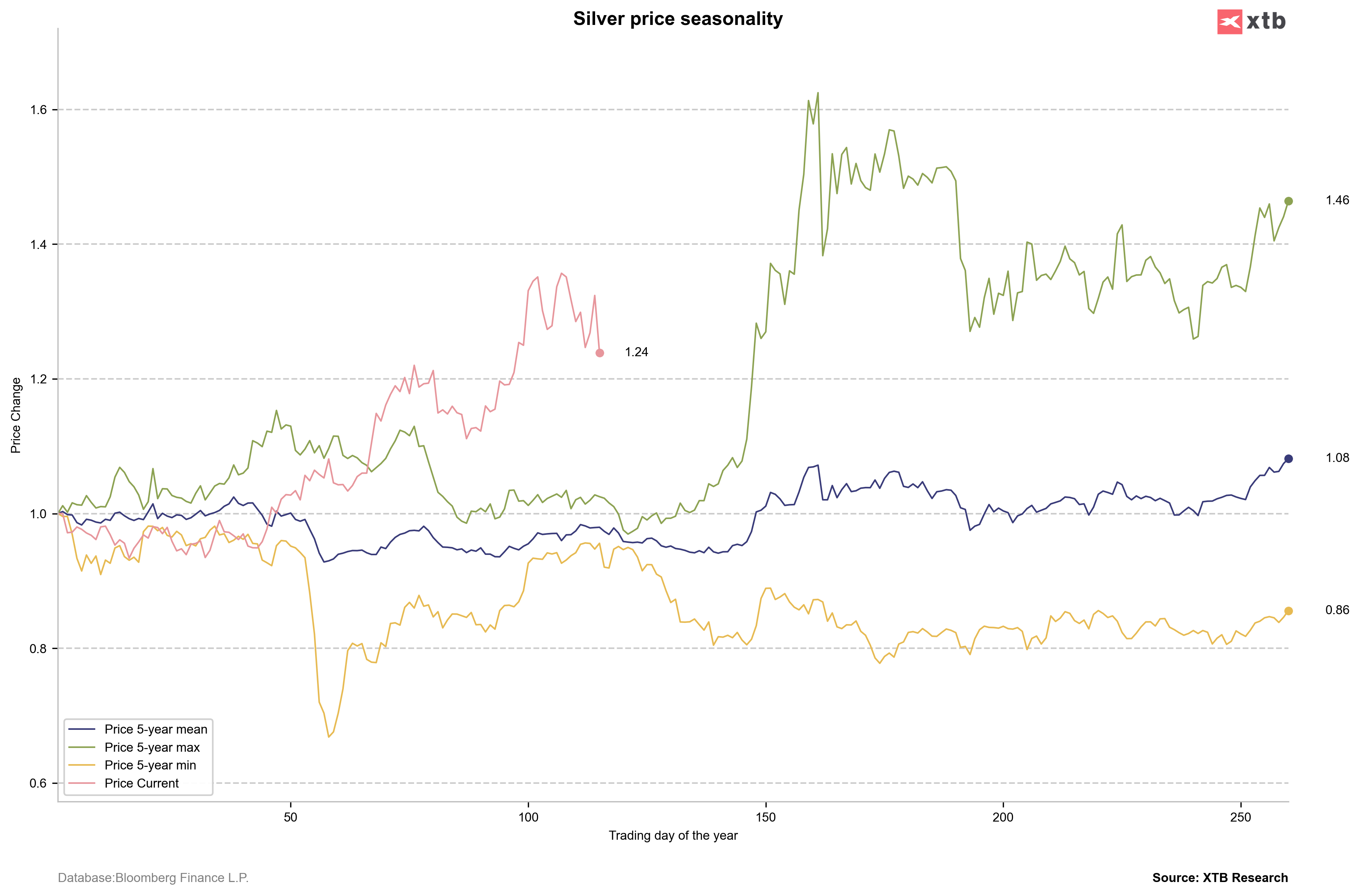The strength of the US dollar and the earlier weakness in gold, linked to the lack of gold purchases for reserves by the People's Bank of China in May, have led to a significant decline in silver prices. Silver is experiencing approximately a 6% drop and is at its lowest since mid-May. On the other hand, it still has some way to go before reaching the key support level at $28.75 per ounce, where the range of the largest correction in ongoing trend, the upward trend line, and the 50-period moving average are located. Currently, the 30-period moving average is being tested, but it has been breached multiple times in the past. As long as the $28.5-28.75 level is not broken, the bulls should remain in control of the market. Let's look at a few charts:

إبدأ بالإستثمار اليوم أو تدرّب على حساب تجريبي
إنشاء حساب حساب تجريبي تحميل تطبيق الجوال تحميل تطبيق الجوالSource: xStation5

Deviation from the 1-year average is still significant. Meanwhile, silver has already crossed the 30-day average - usually, we observed further declines followed by a two-fold deviation from the 30-day average before a rebound occurs. On the other hand, this usually happened during sideways trends. Source: Bloomberg Finance LP, XTB

Silver has experienced its biggest gains in 5 years. Seasonality is not very apparent, but theoretically, it currently indicates a sideways trend or slight declines, and only around the 150th session of the year should we expect a more significant recovery. This could happen when there is renewed talk about rate cuts in the US. Source: Bloomberg Finance LP, XTB

The price ratio has clearly rebounded - silver is losing more than gold. On the other hand, the structure of the current movement does not suggest a permanent trend change. Therefore, it is not excluded that silver will become attractive again in the near future, especially if gold returns to an upward trend. Source: xStation5

